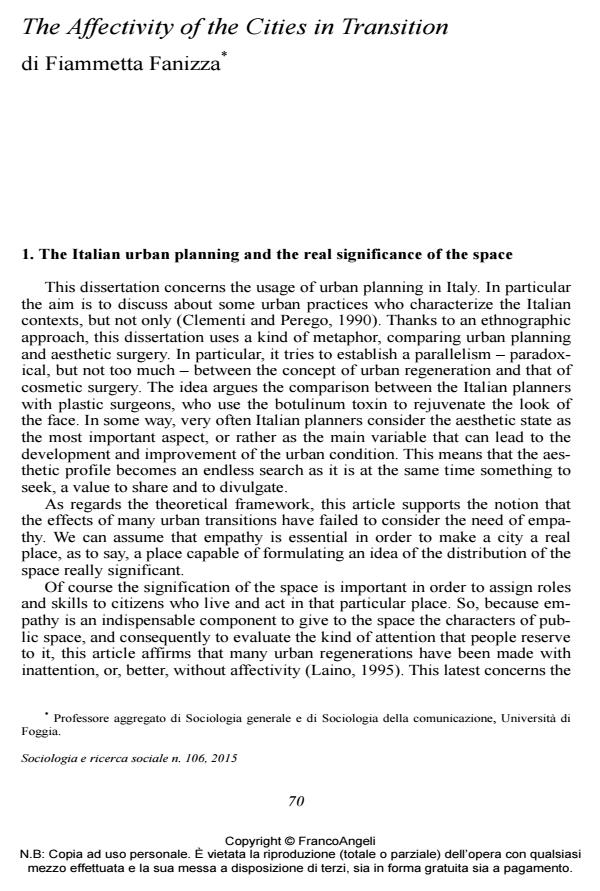The Affectivity of the Cities in Transition
Journal title SOCIOLOGIA E RICERCA SOCIALE
Author/s Fiammetta Fanizza
Publishing Year 2015 Issue 2015/106
Language Italian Pages 10 P. 70-79 File size 48 KB
DOI 10.3280/SR2015-106004
DOI is like a bar code for intellectual property: to have more infomation
click here
Below, you can see the article first page
If you want to buy this article in PDF format, you can do it, following the instructions to buy download credits

FrancoAngeli is member of Publishers International Linking Association, Inc (PILA), a not-for-profit association which run the CrossRef service enabling links to and from online scholarly content.
During the last few years, several Italian city-planners have considered the concept of urban transition as something aprioristically able to produce new social practices. The aim of this article is to analyze the effects of transition in the metropolitan area of Bari (a large town in Southern Italy) where most of the recent public works have ignored the need for empathy. In particular they have not considered the way to capture the citizens’ imagination which is essential for distribution of affectivity into human relationships as those with public institutions. This thesis takes its cue from the results of recent studies regarding the negative effects on the affective tone produced by the botulinum toxin used in plastic surgery, and argues that public works are performed according to an aesthetic view that does not consider the value of beauty as sociability.
Fiammetta Fanizza, The Affectivity of the Cities in Transition in "SOCIOLOGIA E RICERCA SOCIALE " 106/2015, pp 70-79, DOI: 10.3280/SR2015-106004